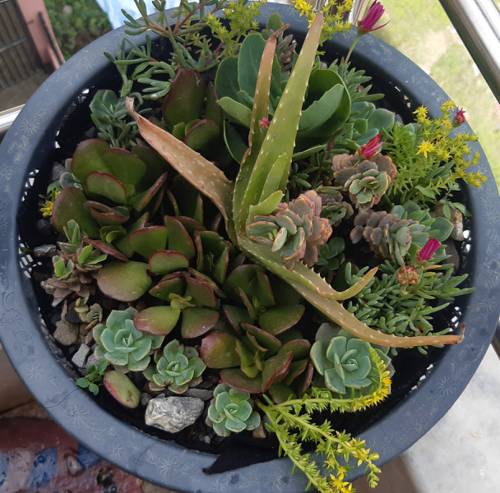
FAQ About Indoor Plant Acoustic Optimization

What is indoor plant acoustic optimization?
Indoor plant acoustic optimization refers to the strategic arrangement of plants within indoor spaces to enhance sound absorption and reduce noise pollution. This practice leverages the natural ability of plants to absorb sound waves, thereby creating a quieter and more pleasant environment.

How do indoor plants help reduce noise?
Indoor plants reduce noise by absorbing, diffracting, and reflecting sound waves. Their leaves, stems, and branches can interfere with sound waves, effectively reducing their intensity. Additionally, the soil and plant containers contribute to sound absorption, creating a dampening effect in an indoor environment.

Which types of indoor plants are best for noise reduction?
Broadleaf plants, like Monstera, Philodendron, and Rubber plants, are particularly effective at noise reduction due to their large surface area. Ferns and other lush, dense plants are also beneficial because they offer a greater amount of foliage for sound waves to interact with. Vining plants can be used strategically to cover large areas, enhancing their sound absorption capabilities.

Where should I place indoor plants for optimal sound absorption?
To optimize sound absorption, place plants in locations where they can intercept sound waves, such as near walls, corners, and sources of noise like windows or entryways. Arranging plants at different heights can also help in spreading their sound-dampening effects throughout the room.

Can indoor plants completely eliminate noise pollution?
While indoor plants can significantly reduce noise levels, they are unlikely to completely eliminate noise pollution on their own. Their effectiveness depends on various factors including plant type, arrangement, room acoustics, and the volume of ambient noise. However, when combined with other acoustic optimization strategies, they can greatly enhance sound quality in indoor environments.

Are there any additional benefits to using indoor plants for acoustic optimization?
Yes, besides noise reduction, indoor plants improve air quality, enhance aesthetics, and contribute to the wellbeing of occupants by reducing stress and promoting creativity. They also offer a natural and cost-effective means of sound management in indoor spaces.

How much noise reduction can be expected from indoor plants?
The amount of noise reduction provided by indoor plants can vary significantly, ranging from a few decibels to more substantial dampening. This depends on the number and types of plants used, their arrangement, and the specific acoustic properties of the room. Generally, a well-planned setup can noticeably improve sound quality.

Do all indoor plants provide the same level of sound absorption?
No, different indoor plants have varying abilities to absorb sound based on their structure, leaf size, and density. Larger, thicker plants are generally more effective at sound absorption. Additionally, plants with dense foliage can create barriers against noise, whereas sparser plants may provide lesser sound dampening.

What room sizes are best suited for indoor plant acoustic optimization?
Indoor plant acoustic optimization can be effective in various room sizes, but larger rooms or open-plan spaces may require more plants to achieve noticeable noise reduction. Smaller rooms can benefit significantly from even a few well-placed plants, as their impact is often more pronounced in tighter spaces.

Can indoor plant acoustic optimization be applied in commercial spaces?
Yes, indoor plant acoustic optimization can be incredibly beneficial in commercial spaces such as offices, cafes, and restaurants. These environments often suffer from excessive noise, and strategically placed plants can help mitigate this issue, creating a more comfortable environment for employees and customers.

Are certain soil types better for sound absorption with indoor plants?
While the choice of soil is not as critical as the plant itself, soils with high moisture content can slightly enhance sound absorption due to their density and dampening conditions. However, effectively managing plant health and growth should remain the priority when considering soil types.

How do you measure the effectiveness of indoor plant acoustic optimization?
The effectiveness can be measured using sound level meters before and after plant arrangement to record changes in decibel levels. Observational feedback regarding reduced echo and improved sound quality can also be indicators of successful acoustic optimization through indoor plants.

Is maintenance of these plants important for continued noise reduction?
Absolutely, regular maintenance of indoor plants is necessary to ensure they remain healthy and effective at absorbing sound. This includes watering, pruning, and checking for pests. Healthy plants provide more consistent sound dampening benefits, as deteriorating plants can reduce acoustic performance.

Can plant containers impact acoustic optimization?
Yes, the type and material of plant containers can contribute to acoustic optimization. Containers made from materials like terracotta or fiberglass can enhance sound absorption when compared to plastic pots, which are less effective at absorbing vibrations.

Are there any combinations of plants that are particularly effective for sound absorption?
A mix of plants with broad leaves and dense foliage, combined with vining plants for larger coverage, can be particularly effective for sound absorption. This combination can create a layered approach to acoustic optimization, efficiently intercepting and dampening sound from multiple angles.

Can artificial plants be used for acoustic optimization in the same way as real plants?
Artificial plants can contribute to sound absorption but generally not as effectively as real plants. While they can diffuse sound to some extent, their lack of organic material means they do not absorb soundwaves as efficiently as their living counterparts. Therefore, while they can assist in noise reduction, they are not a substitute for real plants when aiming for significant acoustic benefits.

What environmental conditions support plant-based acoustic optimization?
Moreover, spaces with hard surfaces like concrete walls, stone floors, and high ceilings benefit the most, as plants can help in breaking up and deflecting sound waves that would otherwise echo extensively.

Can indoor plant acoustic optimization impact indoor acoustics negatively?
Generally, indoor plant acoustic optimization is employed to improve indoor acoustics by reducing excess noise. However, improper placement or excessive use of plants can lead to over-dampening or too much sound absorption, making a space feel less lively or acoustically dead. It's important to balance plant numbers and placement with the desired acoustic ambiance.

How can I integrate indoor plant acoustic optimization into my existing décor?
Integrating indoor plant acoustic optimization can be accomplished by selecting plants and containers that complement your interior design. Consider color, size, and style to harmonize plants with existing furniture and decor. Vertical gardens, using wall-mounted planters or shelves, and corners filled with lush plants can be visually appealing while serving acoustic purposes.
